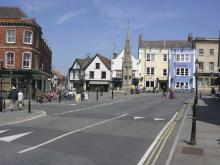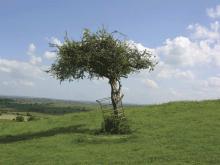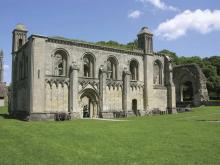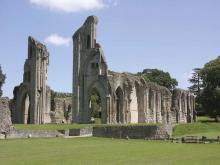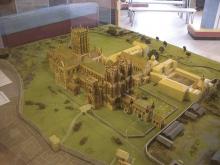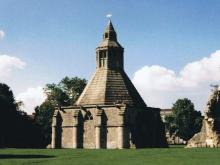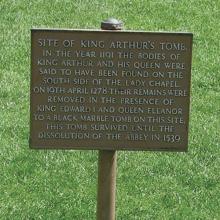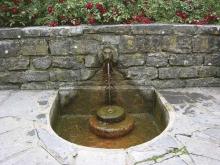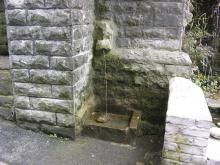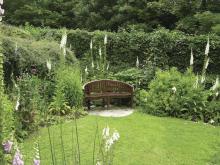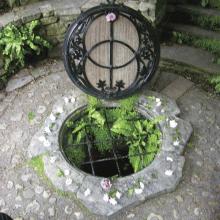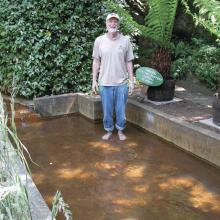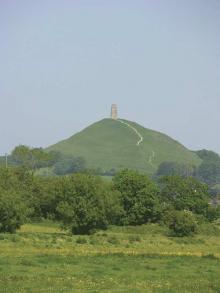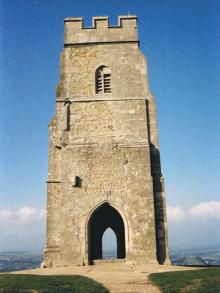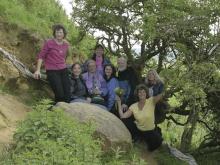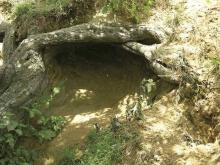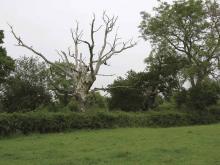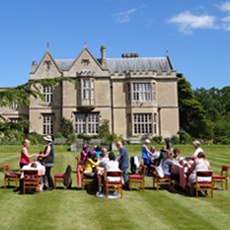By William Lee Rand
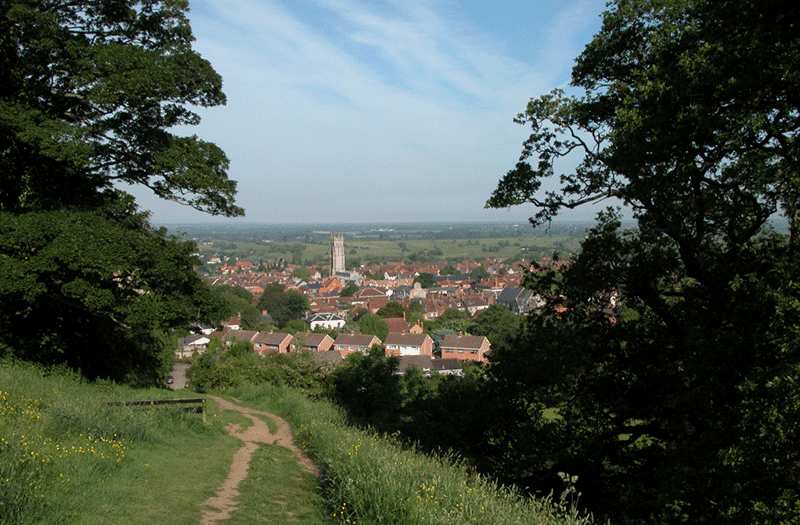
Glastonbury from Chalice Hill
Glastonbury has a mystical history going back into the mists of time. Sacred sites and power spots surround this small town in Somerset, England, and their spiritual energies weave together to create a nurturing ambiance of peacefulness and joy that permeates the entire area. Considered to be the heart chakra of the world and an entrance point into higher dimensions, its special features draw healers and other spiritual pilgrims from all over the earth.
The town is built over important ley lines that cross beneath it. These ley lines channel the life energies of the earth—energies recognized by dowsers and clairvoyants to be especially conducive to meditation, healing and other spiritual practices. Two springs flow from nearby hills; both are purported to have healing properties. The mysterious Tor, a hill with a cave at the bottom, a labyrinth around its sides, and an ancient stone tower at the top, is Glastonbury’s most pronounced topographical feature.
Many myths and legends are associated with the area; some based on fact and others more difficult to verify. Residents are aware of these features and choose to live here out of a desire to be close to spirit and to live in harmony with each other in a supportive and loving community where shared values and goodwill abound.
In ancient times Glastonbury (Glass-town-borough) and the surrounding hills were islands in a swampy inland sea called the Sea of Glass. According to author Nicholas Man, Glastonbury was variously called the Isle of Avalon, Apple Orchard, and the Isle of Glass. Shrouded in the mists which rose from the Sea, the Tor was often all that could be seen of the island.
Over time, the sea, fed by fresh water from the surrounding hills, began to fill with silt. Reeds began to grow in the shallower waters and slowly the sea filled in, creating swamps and later dry land. Further drainage took place when channels were built to drain the remaining water away until today there is no sign of the ancient sea.
This small town can be easily walked from one end to the other in 30 minutes or so. The streets are lined with crystal stores, metaphysical bookshops and vegetarian restaurants. A mix of New Age tourists, European hippies, counterculture types and seemingly “normal” locals fill the streets with friendly activity. Glastonbury is unlike any other English town in its openness to everything holistic, spiritual and metaphysical.
The spiritual sites are within walking distance of the town and lend themselves to meditation, healing and other spiritual practices. The following is a description of the most important sites.
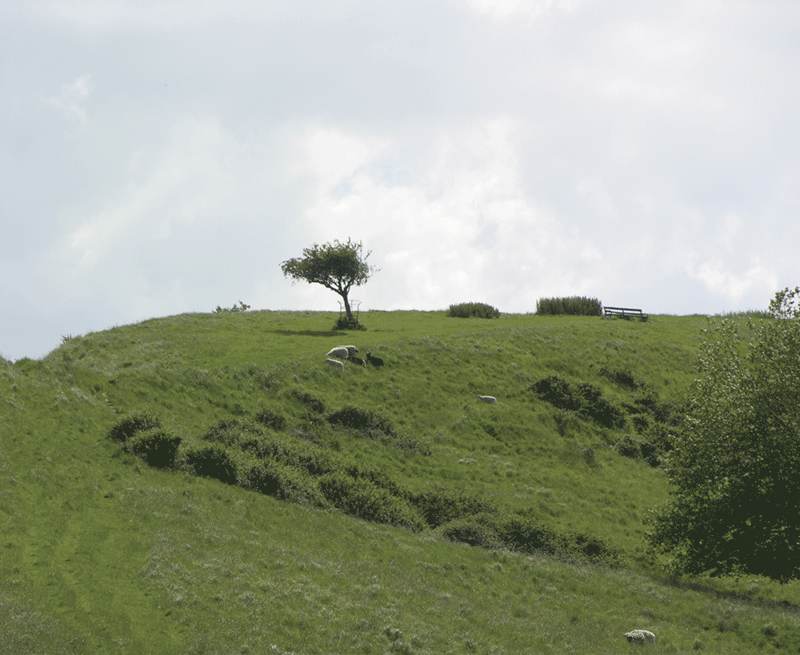
Wearyall Hill
Joseph of Arimathea, the great uncle of Jesus, is reputed to have traveled by boat to the Isle of Avalon with his twelve disciples. After traveling for such a long time, they stopped to rest at one of the prominent hills, as they were “weary all,” thus the name of the hill. As he was standing on top of the hill, Joseph thrust his staff into the ground, and it grew into a thorn bush, which now blooms every Christmas and Easter. This is the story of the Holy Thorn, which is one of the most important Glastonbury legends. Cuttings from the original thorn have been made and grafted to several thorn trees around town, one at St. John’s Church on High Street and two at the Chalice Well gardens.
Glastonbury Abby
Located in town, the entrance is on Magdalene Street next to the town hall. The Abby, currently in ruins, was the site of the first Christian church in Britain, which, according to legend, was built by Joseph of Arimathea and his disciples about AD 63. King Ine built a new church near this site in 704 and dedicated it to the apostles Peter and Paul. In 943 St. Dunstan became abbot and expanded the church to the largest and wealthiest monastery in Britain, after Westminster. It contained an enormous library and housed hundreds of monks. Pilgrims came to the monastery from all over Britain. A fire destroyed most of the Abby in 1184; however, it was rebuilt and once again became a great monastery. At its peak of activity, thousands of visitors flocked to the Abby yearly from all over Europe. The George and Pilgrims Hotel was built outside the Abby walls on High Street to help house the overflow of visitors. A tunnel allowed visitors to go from the hotel to the Abby, thereby avoiding inclement weather. (This tunnel has since collapsed, but the trap door is still visible in the hotel lobby.) In 1539, King Henry the VIII dissolved the monasteries of Britain, confiscated their lands and treasure, and established the Church of England. The roof of the Abby was removed and this caused it to quickly fall into ruin.
King Arthur and Guinevere
On the Abby grounds is the location of an ancient burial site said to have contained the bones of King Arthur and Guinevere and there seems to be some authentication of this.
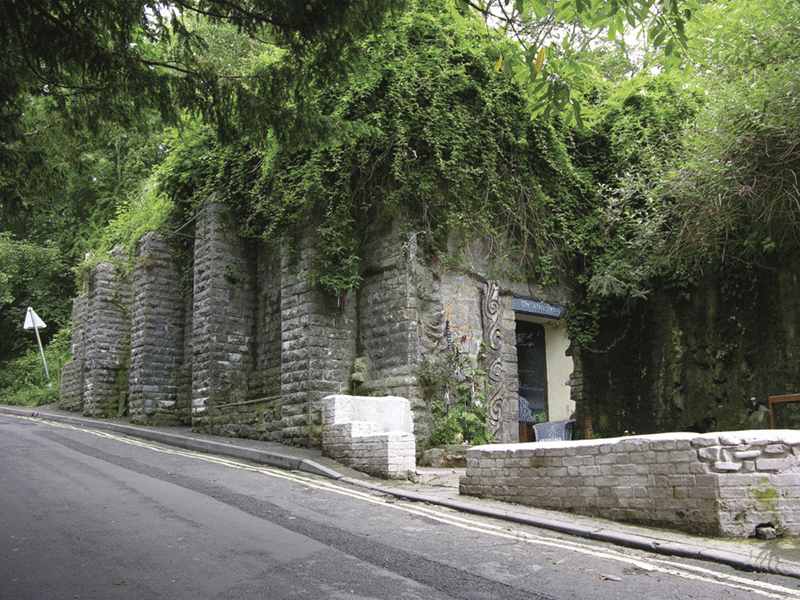
The Old Well House
Red and White Springs
Next to the Chalice Well and just a short distance up Well House Lane you’ll find the old well house where spring water from the Tor was once held in a reservoir. Water flows from a small spigot on the side of the building. This is the White spring that flows from under the Tor. Over thousands of years, the spring created a cave system that goes under the Tor for at least a quarter of a mile. The cave isn’t open to the public, but I’ve heard that at certain times someone is there who’ll at least let you look into the cave. There used to be a small shop and cafe inside the well house selling crystals and serving tea and biscuits, but it is now closed. On the other side of the lane is the red spring that comes from Chalice Well. Both the red and white spring are said to possess healing properties. If you’re walking up to the Tor, you can stop and fill your water bottle with water from both springs if you choose.
Chalice Well and Gardens
Located on Chilkwell Street and Well House Lane, Chalice Well and Gardens are adjacent to Chalice Hill and also near the Tor. This is a very wonderful area. The gardens are beautifully maintained and filled with many varieties of flowers, plants and trees. Chalice Well is a sacred artesian well that flows continuously. Its water has a high iron content, staining the rocks over which it flows a reddish color. The water flow of about 1000 gallons per hour is unchanging year round. It flows through the gardens, forms two small waterfalls, and then goes underground to makes its way to the fish ponds in Glastonbury Abby. The water is pure to drink and is purported to have healing properties. You can fill you water bottle at the Lion’s Head.
The Holy Grail
Legend indicates that Joseph of Arimathea buried the Holy Grail in Chalice Hill along with two containers of Jesus’ blood that came from his wounds while on the cross. After that the water turned blood red, in resonance with the Blood of Christ.
The Vesica Piscis
On the cover of the well you’ll see the Vesica Piscis, which is formed from two overlapping circles with a sword passing through them. It represents the union of Heaven and Earth, Spirit and Matter, Male and Female. The sword represents the means through which one can be present in both worlds simultaneously. The well is capped and there is an old underground reservoir that can be seen if one looks into the well when the sun’s angle is right. Some have used the reservoir for initiations and have plunged into the cold water, diving down through the doorway and into the reservoir chamber to carry out sacred rites. The well area and gardens have a mysteriously peaceful ambience and are a wonderful place for meditation and quiet reflection. Many go to the gardens for this reason.
Fairies in the Gardens
Those who are sensitive are able to see fairies in the gardens. These appear as a circle of misty pale light moving from flower to flower. At other times, they’re seen as a small bright light. On other levels of awareness, especially if one meditates or is taken on a guided meditation, one can see the fairies more vividly. They take on a more classic form and one can communicate with them. The fairies are delighted when humans are aware of them and will often provide healing, guidance and blessings.
Pilgrim’s Bath
Below the first waterfall is Pilgrims’ Bath, which was the scene of healings in the 1700’s. At its peak, up to 10,000 people a day came seeking cures. The healing energies are still present and although the numbers are nothing like the past, many still come for this reason. (The bath is much shallower than the original.) The healing properties of the area come as much from the energy of the water as from the subtle spiritual energies of the grounds. Powerful ley lines, called the Michael and Mary lines, meet in the King Arthur’s Court area between the waterfall and Pilgrims’ Bath.
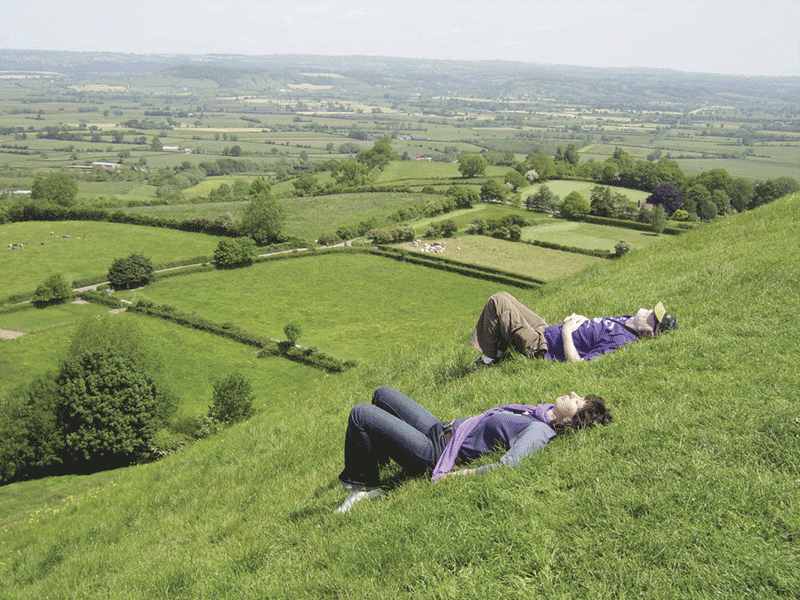
Laying on the grass on the side of the Tor
Tor
This is the most prominent feature in the Glastonbury area. Tor means hill in Celtic. At the top of the Tor is an ancient stone tower, which was part of a small chapel built in the 14th century. The unstable geology of the Tor caused the chapel to fall down, and the tower is all that remains. Around the sides are terraced paths that form a labyrinth system going up the Tor. From the top one can see for miles around the countryside. The town of Glastonbury is visible below, as are Wearyall and Chalice Hills. The town of Wells and the twin towers of Wells Cathedral can be seen in the distance. The Tor is one of the area’s important power spots, and one can sense the strength of the spiritual energy here. This is a good place to meditate, but especially to do Reiki and other healing exercises. Releasing negativity, empowering goals and affirmations, dreaming and formulating plans are all easily done here. This is also a great place to simply relax in the grass on the side of the hill. When I first came to Glastonbury in 1995, I awoke at my B&B one morning to find the area covered in mists, yet I could see the sun dimly shining through. I realized there might be something special taking place on the Tor, so I quickly prepared myself and left. Climbing up through the mists, I slowly rose into brilliant sunlight as I got to the top. There was no wind and just below was a blanket of mist going out to the horizon. There were others there; we were all silent, simply staring out across the mists, lost in meditation.
Entrance to Fairyland
This is on the south side of the Tor, more toward the west. Only a few of the local people know about it. There is a path coming up along the southern side of the Tor from the upper entrance and also another coming down from the top. There’s a thorn tree growing out from the side of the hill and a large omphalos or egg stone on the ground. This sacred stone represents the Goddess and the source of life. The existence of these stones in the area is somewhat of a mystery. How they formed and how they came to be placed in the locations where they’re found is unknown. The tree coming out from the hill can be sat on, and if one does so and takes a moment to relax and drift into inner space, one can sense and even communicate with the fairies that reside there.
Gog and Magog
About a mile to the east of the Tor are the two ancient oaks of Avalon known as Gog and Magog. Planted by Druids 2000 years ago, they are the last remaining oaks from an avenue of trees that led up to the Tor. It is said that the Druids used the avenue for ritual processions. Unfortunately, a farmer clearing his field cut down the other trees over a hundred years ago. It was at this time that the age of the trees was determined by the number of rings. Until recently both Gog and Magog were alive and well, but in the last ten years or so, Gog has lost all of his foliage, yet life can still be sensed within. There is a fence surrounding the trees, but there is a place to climb over. Getting close to them, you’ll see where string, crystals, coins and other sacred objects have been left to adorn them and as a way to ground prayers. Glastonbury has attracted spiritual seekers for thousands of years, providing inspiration, healing and restoration. As you contemplate your spiritual needs and consider a sacred pilgrimage, perhaps you will find your way here either in spirit or as part of a physical journey. In either case, may your spiritual path be blessed by the guiding light of Reiki.
William has taught Reiki classes in Glastonbury since 1996 and often leads the class on a hike to most of the sacred sites mentioned in this article.



